Bearing Clearance and Oil Viscosity Explained
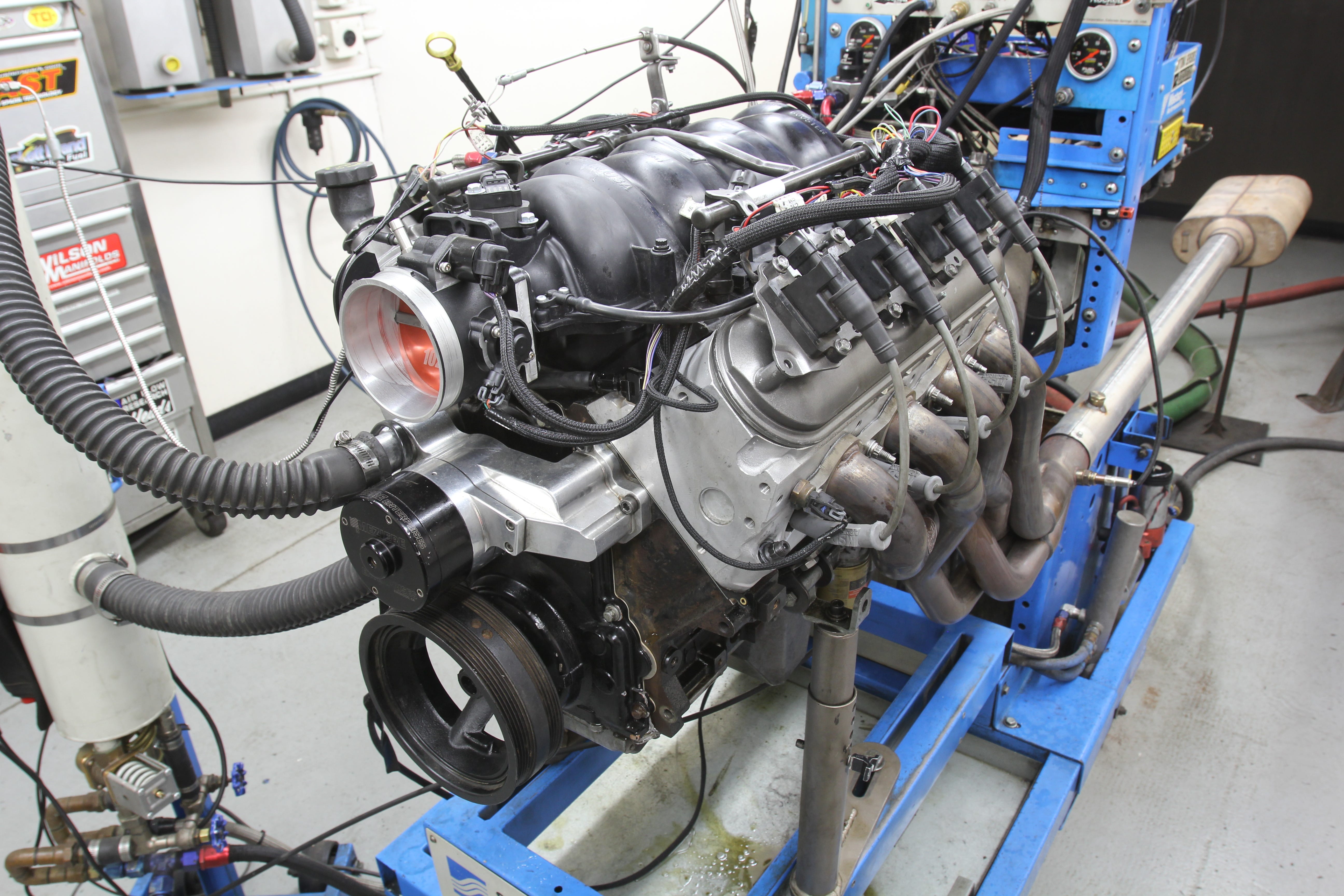
The relationship between bearing clearance and oil viscosity is a delicate balance. Read on for more information on how to get it right!There are some fairly famous duos in the entertainment industry – Abbott and Costello, Rogers and Hammerstein, and Batman and Robin among the more illustrious. So it may not be much of a stretch of the imagination for an engine guy to include the pairing of bearing clearances with oil viscosity as a duo you should become acquainted.
The typical rule that most engine builders follow is that bearing clearance establishes the viscosity of the oil to use within a given oil temperature range. Generally, the tighter the bearing clearance, the lower the viscosity the engine can use while wider clearances require thicker oil. But there are plenty of variables that come into play that are worth investigating.
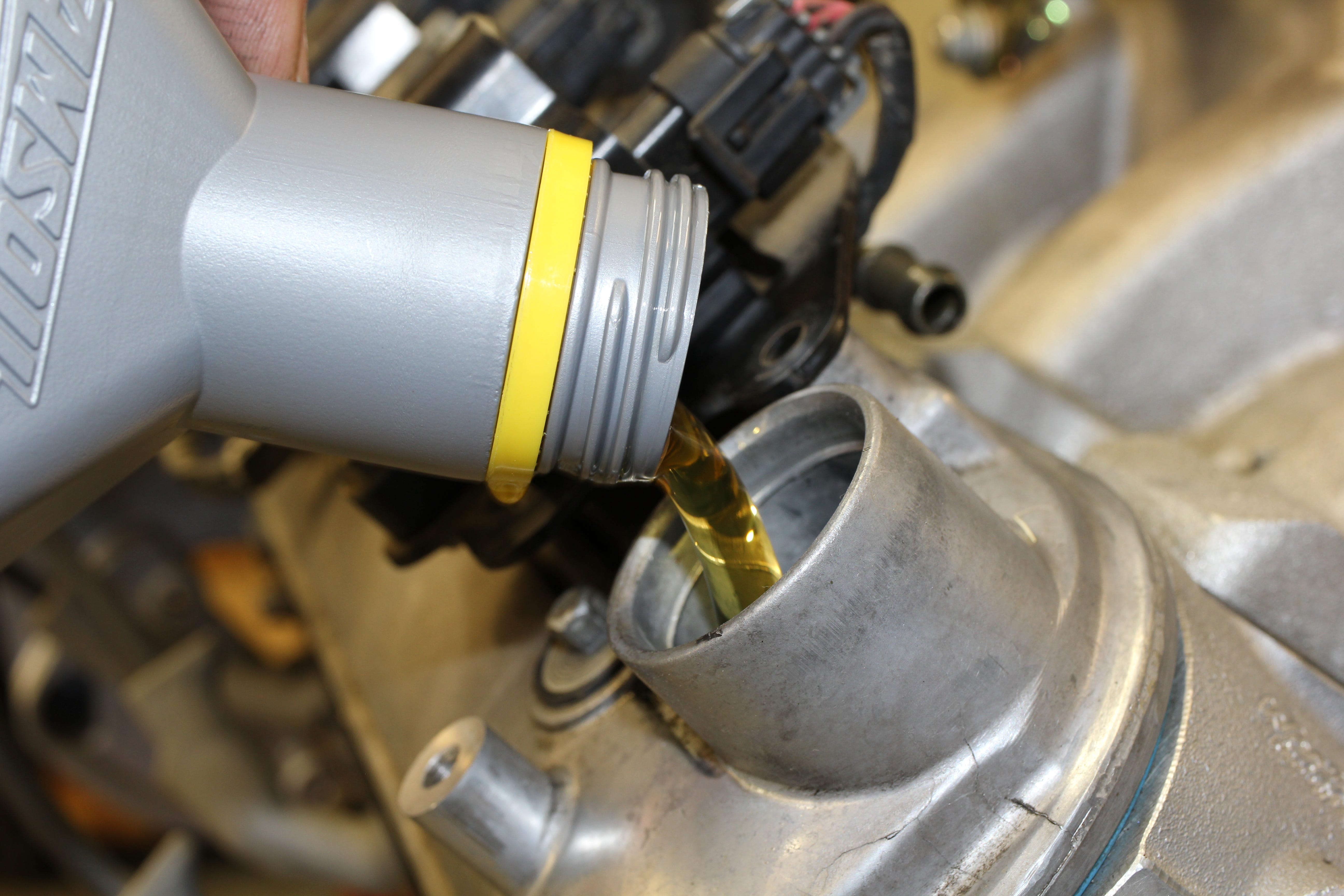
Viscosity is a rating system for oil that rates the oil’s thickness at a given temperature. Production engines are increasingly moving to thinner, less viscous oil in search of improve fuel economy but there are performance advantages to thinner oil if the bearing clearances are somewhat tighter.
The traditional bearing clearance standard for street and most performance applications has been 0.001-inch of clearance for every one inch of crank journal diameter. So a typical small-block Chevy 2.200-inch rod journal would call for a bearing clearance of 0.0022-inch. Some add another 0.0005-inch to be safe – making that 0.0027-inch.This standard works very well especially for engines using production tolerance parts where there could be minor issues with out-of-round or tapered journals or even minor errors in measurement.
This approach isn’t quite as colloquial as it may seem. There are several contributing factors that directly affect a given bearing clearance. The top three variables are load carrying capacity, the amount of oil flow allowed by the clearance, and localized oil temperature. These three are best considered together as opposed to individually since each affects the others in important ways.
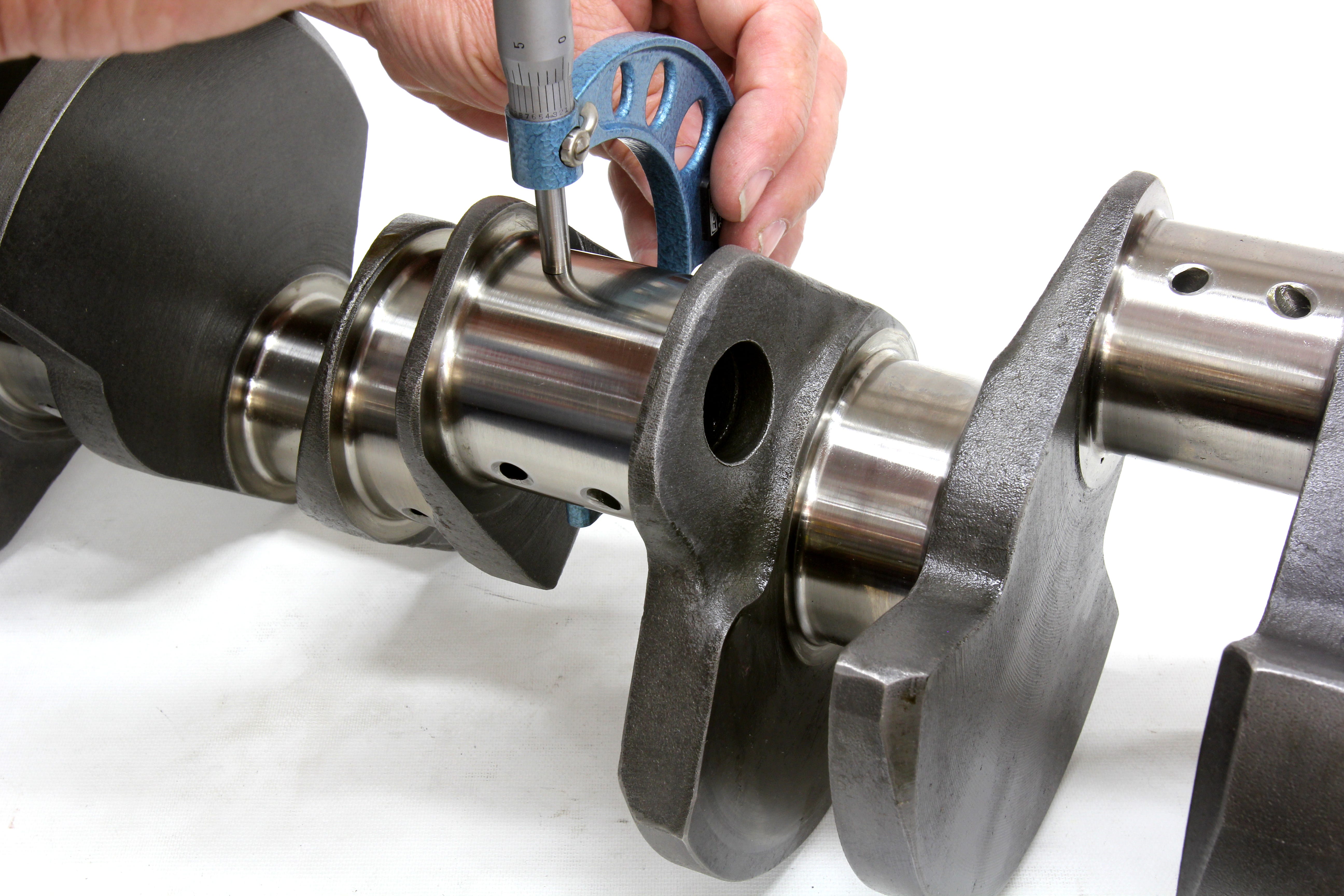
The only right way to begin accurately measuring bearing clearances is with a micrometer that can accurately measure to 0.0001-inch. That’s a tenth of a thousandth.
A bearing’s load carrying capacity is directly affected by clearance. As the clearance is tightened, load carrying capacity increases. As a generalized statement, 0.001-inch clearance offers a higher load carrying capacity than 0.002-inch using the standard 2.45-inch small-block main journal size as the example.
Load capacity increases with less clearance because it spreads the load over a wider bearing surface area, which increases the capacity. Think of this like wearing a pair of snow shoes that allow you to walk on deep snow without sinking in. Remove the shoes and your feet sink because your weight is concentrated on a smaller surface area. So as bearing clearance increases, the load carrying capacity is reduced because the load is concentrated in a smaller area.
Bearing Oil Clearance Chart
| Oil Viscosity | Rod BearingClearance | Main BearingClearance |
| 20w / 5w20 | < 0.0021 | <0.0020 |
| 30w / 5w30 | 0.0021 – 0.0026 | 0.0020 – 0.0025 |
| 40w / 10w40 | 0.0026 – 0.0031 | 0.0025 – 0.0030 |
| 50w / 20w50 | 0.0031 > | 0.0030 > |
Common sense dictates that bearing clearance directly affects oil flow with predicable results. Reducing the clearance will increase the restriction to flow and reduce the volume of oil past the bearing. Because of this reduced flow, the localized bearing temperature will increase. If this temperature exceeds the oil’s thermal stability limit, the oil will begin to oxidize and break down, reducing its ability to lubricate. We will get into oil viscosity shortly as this plays an integrated part in this scenario.
So bearing clearance becomes a balancing act between these three factors to establish a clearance that satisfies all as efficiently as possible. This is how that 0.001-inch of clearance per one inch of journal diameter was created as the best compromise.
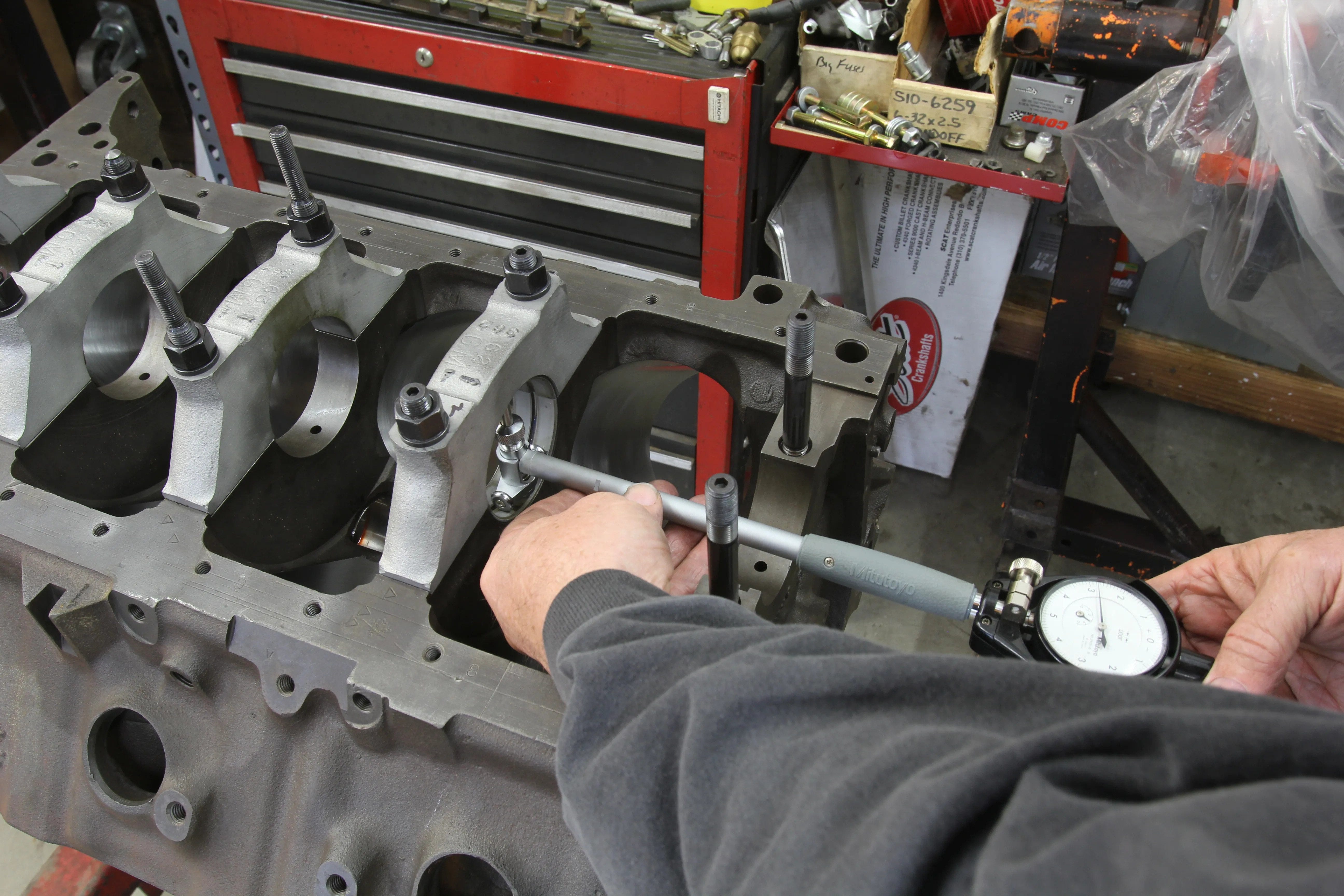
Once the journal diameter is established, use the same micrometer to set a dial bore gauge to the journal size. The clearance read by the dial bore gauge will be the bearing clearance. In this example, we’re looking at 0.0027-inch of main bearing clearance. Clearances must always be checked in the true vertical.
Perhaps this would be a good place to take a slightly closer look at exactly how those running clearances play out. Using simple round numbers, let’s start with a 2.00-inch rod journal with 0.0020-inch of clearance. This assumes we will have 0.001-inch on the top and bottom of the journal, which is true but only in a theoretical sense.
In a running engine, cylinder pressure pushes downward on the piston, reducing that 0.001-inch figure. A loaded connecting rod at peak cylinder pressure will reduce that oil film clearance to as small as 0.0002-inch. With a static bearing clearance of 0.002-inch that means the upper half of the rod bearing has 0.0198-inch worth of clearance. This is important because this larger clearance creates a space easily filled with fresh oil for the following rotation.
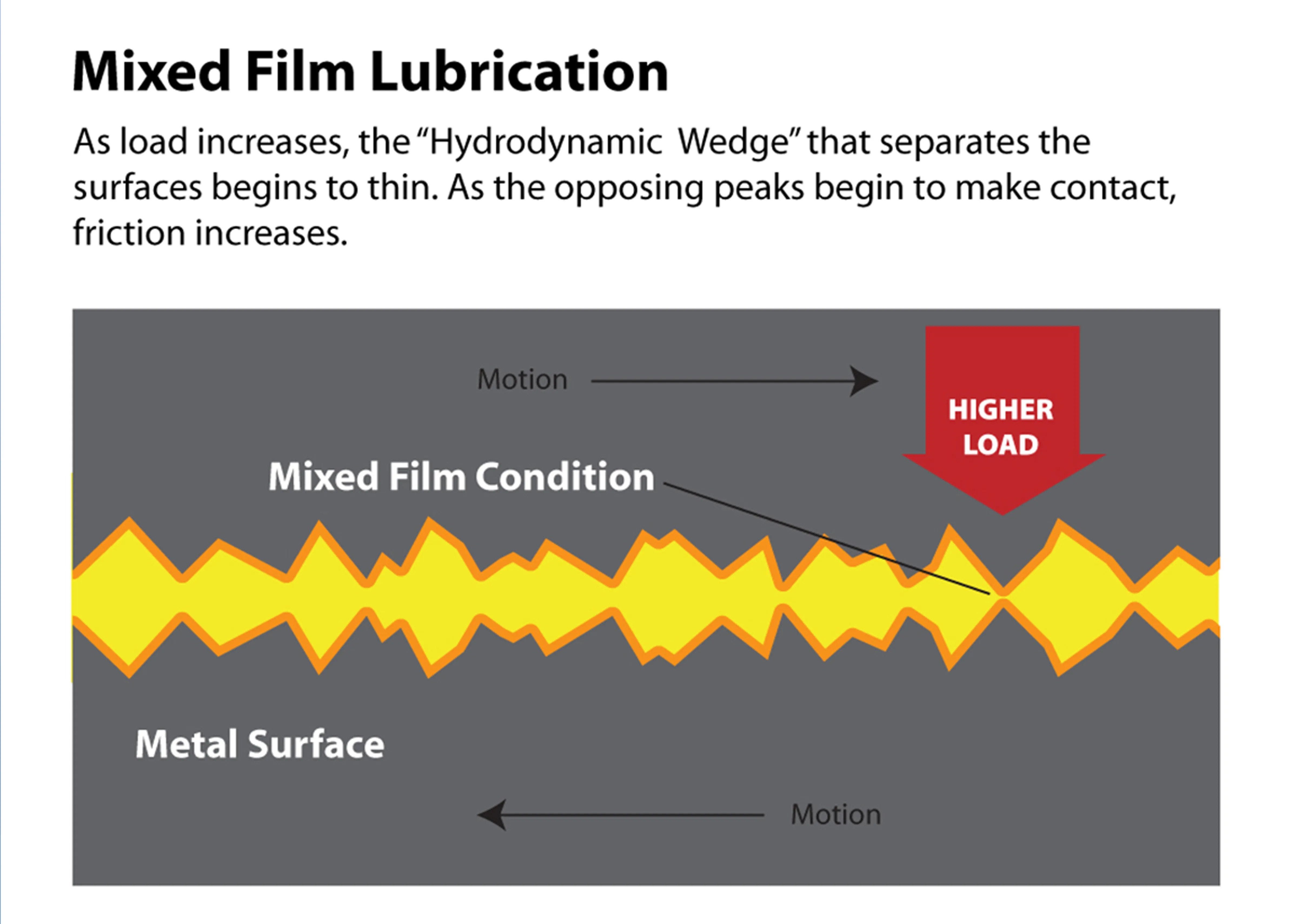
This Driven Racing illustration offers a microscopic view of what happens when operating clearances become tight. The peaks of the crankshaft journal can overlap the peaks of the bearing material causing wear. This is called a mixed film condition and can be caused by either tight clearances or an oil viscosity that is to thin perhaps caused by high oil temperature.
This leads directly to the value of film thickness, which is created by a combination of the oil viscosity, bearing speed, and load. Oil viscosity predictably changes with temperature while the bearing speed is determined by the combination of the journal diameter and engine rpm and load is of course application dependent. All of these factors play into establishing the thickness of the film of oil. We spoke to Lake Speed, Jr., with Driven Racing Oil who used these three factors (and more) to perform a test of film thickness and stability with different oils and bearings at Shaver Racing Engines in Torrance, California.
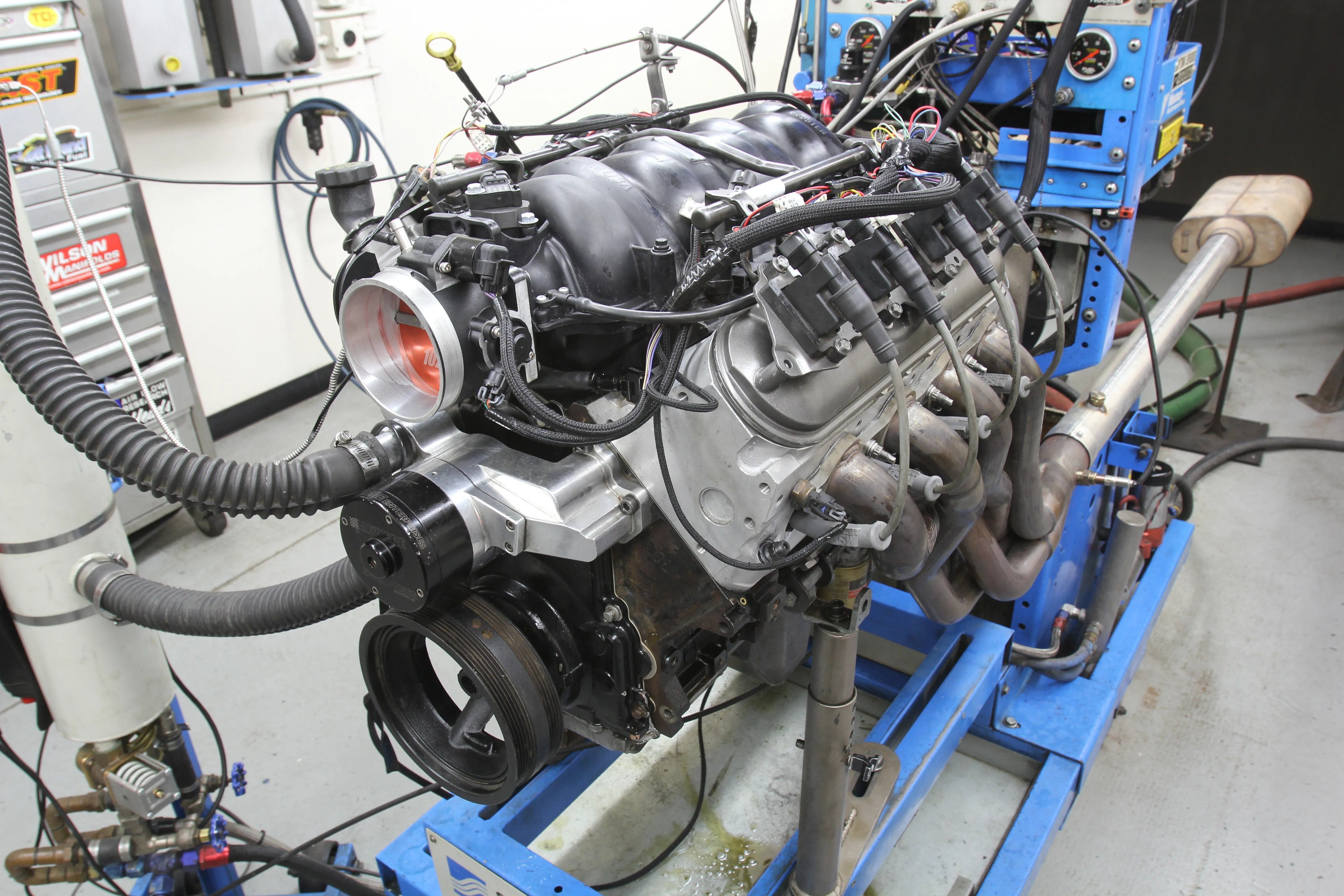
This 500 hp iron block LS generated 80-plus psi of oil pressure, so we drained the 10w30 and replaced it with 5w20 viscosity oil. From 4,000 to 6,500 the engine gained an average of 3.1 hp. The engine still produced over 70 psi peak oil pressure with the 5w20 oil so there are further gains to be realized.
His test was aimed mainly at evaluating coated bearings but it also looked at the ability of the oil to maintain its given film thickness under extreme temperature. It is commonly acknowledged that synthetics do a much better job of lubrication and protecting engine components compared to conventional oils at elevated oil temperatures. Speed’s test compared a synthetic Driven oil to a conventional Driven oil of the same viscosity and additive packages. The visual evaluation of the bearings along with a used oil analysis (UOA) revealed radically reduced physical contact between the crankshaft and the main and rod bearings with the synthetic oil. This offers specific evidence that a higher-quality synthetic offers real advantages especially with engines making big power where heat is a factor.
Ironically, Speed’s test employed a mild, 400 hp 383ci small-block Chevy at slow speeds, which can be abusive on bearings because of the extreme load. This is why lugging an engine at low speed isn’t a good idea as the loads increase dramatically. The quality of the oil played a big part in maintaining the proper lubrication barrier between the bearings and the crank journal. According to Speed, “Today’s oils have much greater load-carrying capacity that older oils.” This higher capacity spreads the load over a larger area which improves the overall capacity and avoids stress fractures that can occur in bearings due to excess load.
All of these factors play into the final decisions around bearing clearance and viscosity. If all we do is change to an aluminum connecting rod for example, this should require an increase in bearing clearance if for no other reason than because aluminum offers a linear rate of expansion that is roughly twice that of steel or cast iron. This will also have a direct affect on the running clearances. This however, should be carefully considered. As an example, you might think that an all-aluminum engine would demand a much different main bearing clearance compared to an all-iron version.

Driven Racing Oil’s Lake Speed, Jr. performed a series of tests of synthetic oil (left) versus conventional oil (right) on engine bearings in a small-block Chevy. Not surprisingly, the synthetic’s more stable oil film dramatically improved bearing wear even over a three-hour, high-load-low-rpm test. Both oils used the same viscosity and additive package so the only difference was the base oil.
Looking at this a little closer, most performance small-block Chevy aluminum blocks feature steel main caps. So now we have an aluminum block with steel main caps and the decision is whether this warrants a change in main bearing clearance. If we consider that all of the load will be applied to the steel main cap side of the engine, decreasing the main bearing clearance to account for the added growth of the aluminum block may not necessarily be a good decision. Tighter clearances also demand very careful cold weather starting and warm-up procedures because aluminum also will contract at twice the rate of iron or steel. Most engine builders we spoke to said they don’t make major clearance changes when building an aluminum block engine.
While bearings need a solid oil film to protect against wear, there are multiple factors that come into play in order to create the ideal combination of load carrying capacity and oil flow while minimizing oil temperature. This demands a careful balance of clearances, oil viscosity, and temperature control to avoid problems. The good news is as oil quality continues to improve, this thermal stability will continue to push toward lighter oil and tighter clearances with potential improvements in both durability and power.
Driven Bearing Clearance vs Oil Viscosity
| Main Bearing Clearance | Oil Temp Lessthan 160 F | Oil Temp160-220F | Oil TempOver 220 F |
| Iron Block | |||
| 0.0034-0.0039 | 10w40 or 15w40 | 15w50-20w50 | 20w60 – 60w |
| 0.0028-0.0033 | 5w30 or 10w30 | 10w40 or 15w40 | 15w50-20w50 |
| 0.0022-0.0027 | 0w20 or 5w20 | 5w30 or 10w30 | 10w40 or 15w40 |
| 0.0016-0.0021 | 0w10 | 0w20 or 5w20 | 5w30 or 10w30 |
| 0.0010-0.0015 | 0w5 | 0w10 | 0w20 or 5w20 |
| Aluminum Block | |||
| 0.0029-0.0034 | 10w40 or 5w40 | 15w50 or 20w50 | 20w60 or 60w |
| 0.0023-0.0028 | 5w30 or 10w30 | 10w40 or 15w40 | 15w50 or 20w50 |
| 0.0018-0.0022 | 0w20 or 5w20 | 5w30 or 10w30 | 10w40 or 15w40 |
| 0.0012-0.0017 | 0w10 | 0w20 or 5w20 | 5w30 or 10w30 |
| 0.0006-0.0011 | 0w5 | 0w10 | 0w20 or 5w20 |
Connecting Rod Clearance
| Clearance | Oil Temp Lessthan 160 F | Oil Temp160-220F | Oil TempOver 220 F |
| Steel Rod | |||
| 0.0028-0.0033 | 5w30 or 10w30 | 10w40 or 15w40 | 15w50 or 20w50 |
| 0.0022-0.0027 | 0w20 or 5w20 | 5w30 or 10w30 | 10w40 or 15w40 |
| 0.0016-0.0021 | 0w10 | 0w20 or 5w20 | 5w30 or 10w30 |
| 0.0010-0.0015 | Ow5 | 0w10 | 0w20 or 5w20 |
| Aluminum Rod | |||
| 0.0023-0.0028 | 5w30 or 10w30 | 15w50 or 20w50 | 20w60 or 60w |
| 0.0018-0.0022 | 0w20 or 5w20 | 10w40 or 15w40 | 15w50 or 20w50 |
| 0.0012-0.0017 | 0w10 | 5w30 or 10w30 | 10w40 or 15w40 |
This Driven Racing Oil chart (above) illustrates some basic starting points for different engine applications. It’s important to choose the correct viscosity grade for the maximum engine oil temperature. As oil temperatures increases, the viscosity will drop. When there is a conflict between rod and main clearances, it’s always best to use the heavier of the two viscosity recommendations. Keep in mind that these should be considered as recommended starting points for bearing clearances and oil viscosity. Individual applications can certainly vary.
